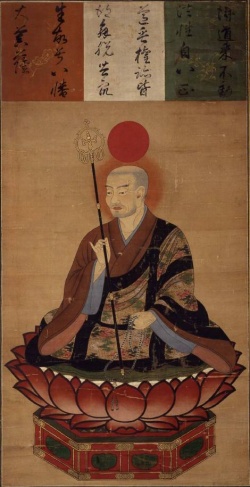Hachiman
Also known as Great Bodhisattva Hachiman.
One of Japan's main deities. The first known shrine to Hachiman was built in Usa, Buzen Province, on Japan's southernmost main island, Kyushu, sometime between the sixth and the eighth century. Later this god became famous for his oracles, one of which declared that Hachiman would protect the construction of the great image of Vairochana Buddha at Todai-ji temple in Nara in the mid-eighth century. For this the god was given the Buddhist title "Great Bodhisattva" in 781, making him the first Japanese deity to receive this title.
This event is seen as symbolic of the emerging syncretism of Buddhism and Japan's indigenous religion, Shinto, at the time. In the Heian period (794-1185), Hachiman was widely revered as the deified spirit of Emperor Ojin, and a derivative shrine called Iwashimizu Hachiman Shrine was built in 860 in the suburbs of Kyoto, the capital. This shrine, along with Ise Shrine, came to be devoted to the imperial ancestors.
Later the Minamoto clan adopted Hachiman as its patron deity, and Minamoto no Yoritomo, the founder of the Kamakura shogunate, established a shrine to Hachiman at Tsurugaoka in Kamakura in the late twelfth century. With this, Hachiman came to be known as the deity of warriors or the god of war. As worship of Hachiman spread, he also came to be regarded as the guardian deity of many respective communities. Hachiman's incorporation as a protective deity of Buddhism signifies the transition of Buddhism from its early status in Japan as a foreign religion to a mainstay of Japan's spiritual culture.
